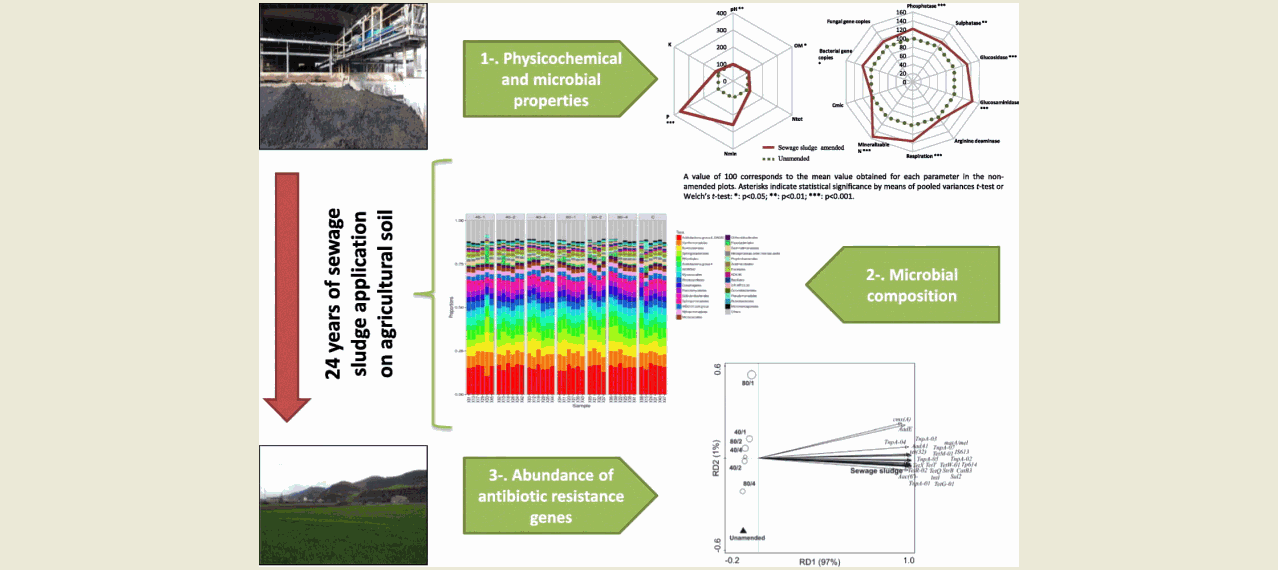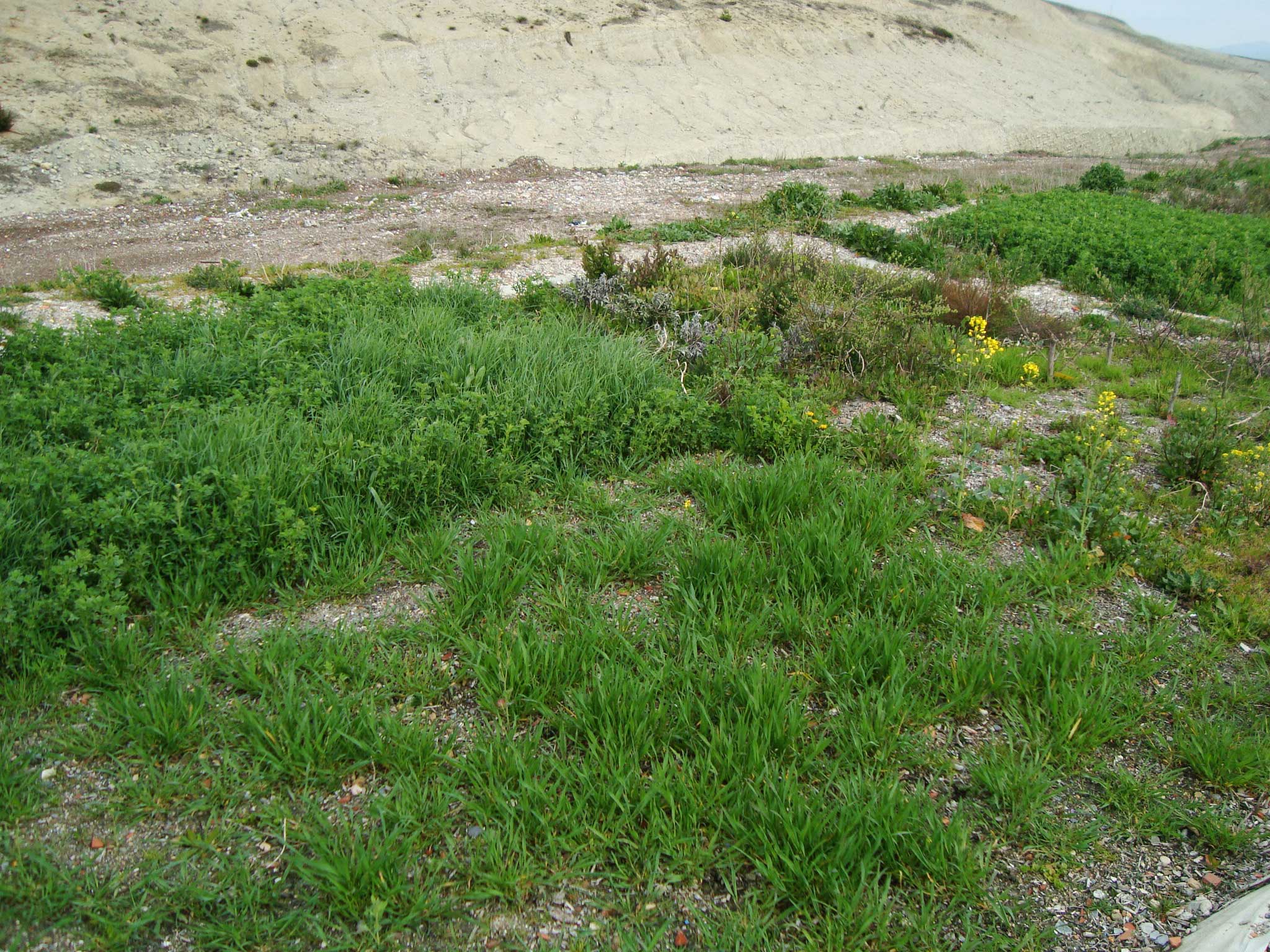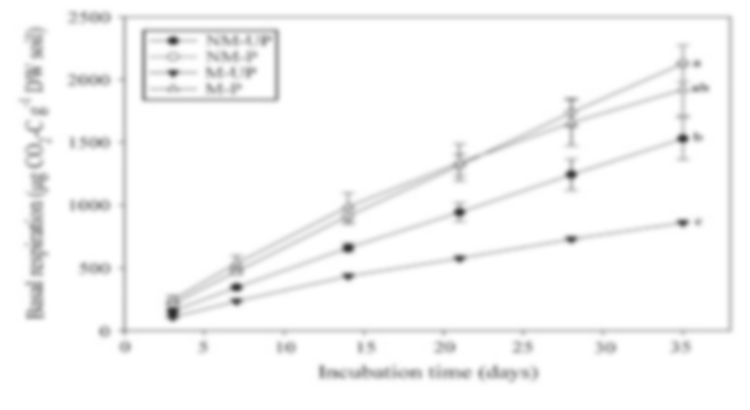Authors: Julen Urra, Itziar Alkorta, Iker Mijangos, Lur Epelde, Carlos Garbisu
Journal: Science of the Total Environment
Vol: 647, 1410-1420
Date: 2019
The application of sewage sludge as soil amendment is a common agricultural practice. However, wastewater treatment plants, sewage sludge and sewage sludge-amended soils have been reported as hotspots for the appearance and dissemination of antibiotic resistance, driven, among other factors, by selection pressure exerted by co-exposure to antibiotics and heavy metals. To address this threat to environmental and human health, soil samples from a long-term (24 years) field experiment, carried out to study the impact of thermally dried and anaerobically digested sewage sludge (at different doses and frequencies of application) on agricultural soil quality, were investigated for the presence of genes encoding antibiotic resistance (ARGs) and mobile genetic elements (MGEs). Sewage sludge-induced changes in specific soil physicochemical and microbial properties, as indicators of soil quality, were also investigated. The application of sewage sludge increased the total concentration of copper and zinc in amended soils, but without affecting the bioavailability of these metals, possibly due to the high values of soil pH and organic matter content. Soil microbal quality, as reflected by the value of the Soil Quality Index, was higher in sewage sludge-amended soils. Similarly, the application of sewage sludge increased soil microbial activity and biomass, as well as the abundance of ARGs and MGE genes, posing a risk of dissemination of antibiotic resistance. In contrast, the composition of soil prokaryotic communities was not significantly altered by the application of sewage sludge. We found correlation between soil Cu and Zn concentrations and the abundance of ARGs and MGE genes. It was concluded that sewage sludge-derived amendments must be properly treated and managed if they are to be applied to agricultural soil.




